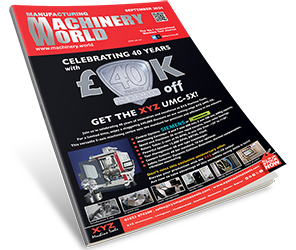EMO Hannover boosts orders in the year’s third quarter
In the third quarter of 2017, order bookings at the German machine tool industry rose by 13 per cent compared to the previous year’s equivalent period. Domestic orders were up by 31 per cent, exports by 5 per cent. In the first three quarters of 2017, total order bookings increased by 3 per cent. Domestic orders were down by 2 per cent. Order bookings from abroad rose by 5 per cent, with metal-cutting and forming technologies performing equally well
“The gratifying upturn in our orders is even more marked in the most recent figures,” comments Dr. Wilfried Schäfer, Executive Director of the sectoral confederation VDW (German Machine Tool Builders’ Association) in Frankfurt am Main. In September, orders in all three categories showed a double-figure rise, thus recording the steepest growth in the ongoing year. Domestic orders, in particular, soared by 46 per cent, thus compensating almost entirely in a single month for the losses recorded during 2017 so far. This means the turnaround we expected for the year’s second half is well under way,” says Dr. Schäfer. “What we’re seeing here is not least the effects of a highly successful EMO Hannover, which triggered a substantial volume of orders,” he adds.
For the orders from abroad, both euro and non-euro nations ordered in the year’s third quarter 5 per cent more than in the equivalent period of 2016. The eurozone is continuing its sustained upturn phase, driven by the markets of Southern Europe, like Spain, France and Italy. The major lead markets of China and the USA are doing very well too. In the wake of China, the other Asian markets are likewise recovering.
In October, the sector’s capacity utilisation was running at almost 92 per cent. Total payroll most recently came to 70,360 employees, and was thus 3 per cent up on the preceding year.
“The sector is optimistic for the future. Over the year as a whole, we are anticipating a rise in production output of 3 per cent“, emphasises the VDW’s Executive Director Dr. Schäfer. “Automation, digitalisation, or the shift in the automotive industry’s value added chain away from the manufacturers and towards the component suppliers, offer major opportunities, but will also necessitate substantial effort on the part of the companies involved if they are to make successful use of them”, he says in conclusion.







